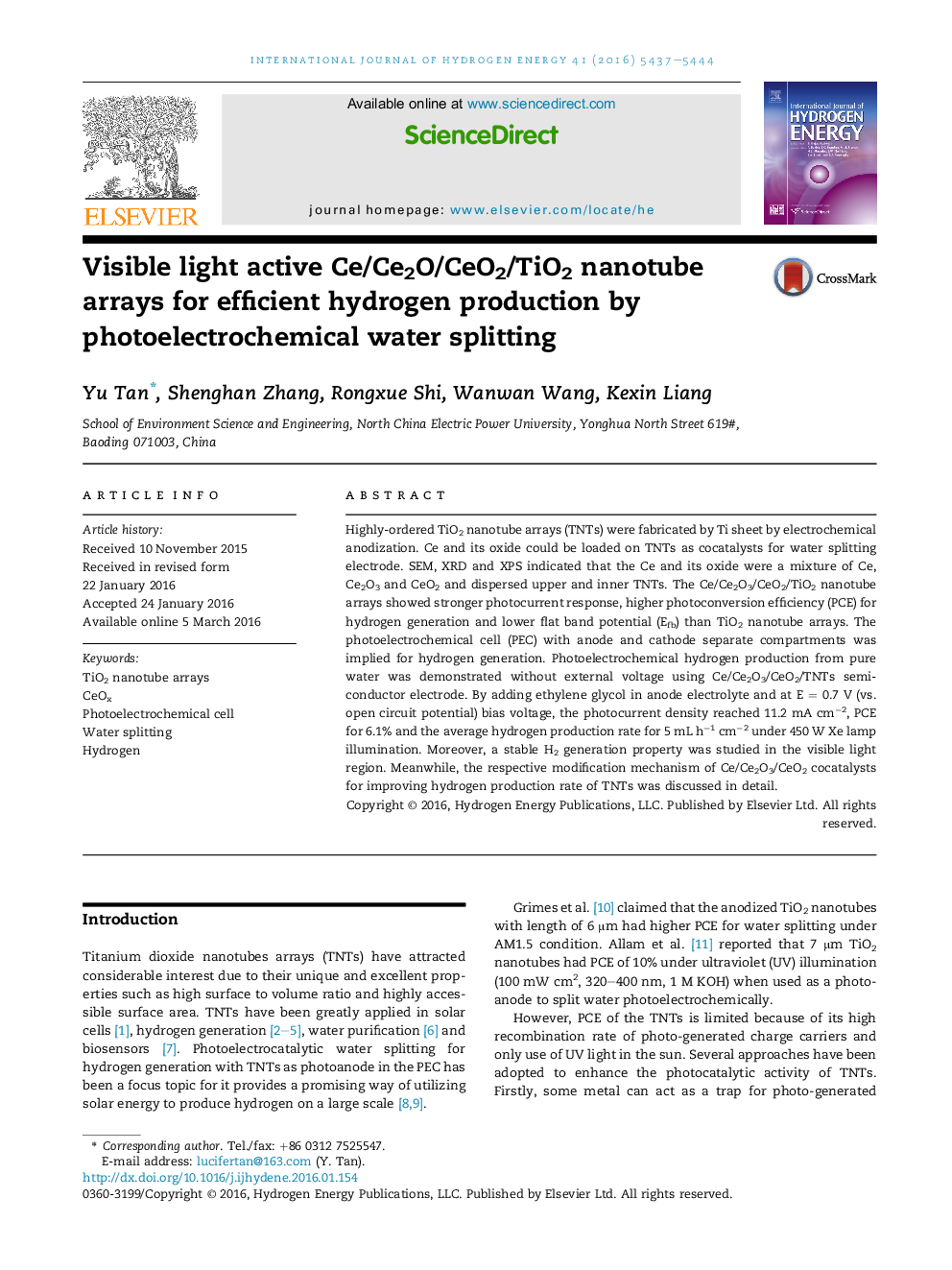| Article ID | Journal | Published Year | Pages | File Type |
|---|---|---|---|---|
| 1268784 | International Journal of Hydrogen Energy | 2016 | 8 Pages |
•We prepared Ce, Ce2O3 and CeO2 cocatalysts modified TiO2 nanotube arrays catalyst.•The modified catalyst showed higher photoconversion efficiency in white or visible light.•The flat band potential of the modified catalyst indicated negative movement.•The catalyst can split pure water to produce hydrogen without external voltage.•A stable H2 generation property was obtained with the highest efficiency of 6.1%.
Highly-ordered TiO2 nanotube arrays (TNTs) were fabricated by Ti sheet by electrochemical anodization. Ce and its oxide could be loaded on TNTs as cocatalysts for water splitting electrode. SEM, XRD and XPS indicated that the Ce and its oxide were a mixture of Ce, Ce2O3 and CeO2 and dispersed upper and inner TNTs. The Ce/Ce2O3/CeO2/TiO2 nanotube arrays showed stronger photocurrent response, higher photoconversion efficiency (PCE) for hydrogen generation and lower flat band potential (Efb) than TiO2 nanotube arrays. The photoelectrochemical cell (PEC) with anode and cathode separate compartments was implied for hydrogen generation. Photoelectrochemical hydrogen production from pure water was demonstrated without external voltage using Ce/Ce2O3/CeO2/TNTs semiconductor electrode. By adding ethylene glycol in anode electrolyte and at E = 0.7 V (vs. open circuit potential) bias voltage, the photocurrent density reached 11.2 mA cm−2, PCE for 6.1% and the average hydrogen production rate for 5 mL h−1 cm−2 under 450 W Xe lamp illumination. Moreover, a stable H2 generation property was studied in the visible light region. Meanwhile, the respective modification mechanism of Ce/Ce2O3/CeO2 cocatalysts for improving hydrogen production rate of TNTs was discussed in detail.
Graphical abstractFigure optionsDownload full-size imageDownload as PowerPoint slide
